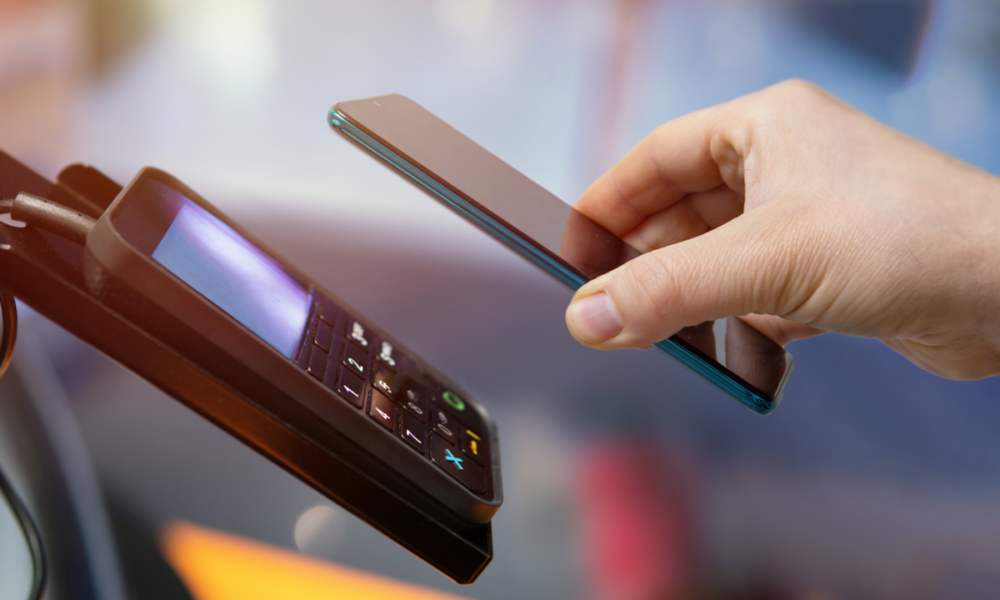Every innovation needs a supporting infrastructure network to scale.
And, with the news that Apple will allow third-party developers to access its near-field communication (NFC) chip this autumn with the release of iOS 18.1, crypto and blockchain enthusiasts are increasingly of the hope that crypto payments are coming closer to finding that much-needed infrastructure.
Apple’s move, influenced by the European Union’s Digital Markets Act (DMA) and growing regulatory pressure, marks a departure from Apple’s historically walled-garden approach to its hardware ecosystem, and the cryptocurrency industry stands to benefit from this newfound technical openness in one of the world’s most popular smartphones.
NFC technology, which enables two devices placed within a few centimeters of each other to communicate, is already widely used for contactless payments through services like Apple Pay. By opening up NFC access to developers, developers of Web3 wallets and crypto wallets will be able to invoke NFC for crypto-based merchant payments and commercial transactions.
This not only simplifies the process of using cryptocurrency for everyday purchases but also holds the potential to significantly expand the utility and potential reach of digital currencies within the commerce environment.
Read more: Crypto’s Three Priorities for 2024: Interoperability, Acceptance, Regulation
Unlocking a New Frontier for Tap-to-Pay Crypto Payments
The opening up of Apple’s NFC chip represents a significant opportunity for the cryptocurrency sector, particularly for developers seeking to create more accessible and scalable crypto payment solutions. One of the main barriers to mainstream crypto adoption has been the complexity of using cryptocurrencies for everyday transactions. While there have been strides in simplifying crypto payments, they still lag behind traditional payment methods in terms of ease of use. The integration of crypto wallets and payment apps with NFC chips could revolutionize this space by enabling tap-to-pay functionality for crypto transactions.
“It’s important to know that crypto is not just bitcoin and Doge and NFTs,” Sheraz Shere, head of payments at Solana Foundation, told PYMNTS. “… Blockchains are really alternative rails for payments and financial assets … An issue has been that the technology has not been user-friendly. It’s all been designed by engineers … to be very tech-centric and not use case or UX centric.”
PYMNTS Intelligence has found that a positive checkout experience keeps customers coming back to a merchant.
With cryptocurrency, “a lack of familiarity can lead to a lack of comfort, which will often lead to a lack of adoption,” Ajay Rajani, vice president of expansion and crypto at Tala, told PYMNTS.
And in order to capture the opportunity that Web3 wallets now have, crypto leaders are calling on merchants to work with their payment providers to ready themselves for the upcoming shift.
“PoS hardware/software companies should ready firmware updates so that they can send/receive these NFC instructions, and work with their Payment Processors to ensure that those firms upgrade to support native USDC settlement (many PSPs and Processors are already doing this),” tweeted Circle CEO Jeremy Allaire on X in response to the news.
“FWIW [for what it’s worth], this applies to lots of things … NFTs for tickets, other certificates, other stablecoins like EURC, etc.,” Allaire added.
See also: Making Sense of the State of Crypto in 2024
Interoperability and Ecosystem Growth
The opening of Apple’s NFC chip could foster greater interoperability between traditional financial systems and the emerging crypto economy. Third-party developers could create apps that seamlessly bridge the gap between fiat and crypto payments, enabling users to switch between the two with minimal friction.
Already, the marketplace is responding with a directory of merchants accepting crypto payments being launched in response to Apple’s announcement.
And elsewhere, the same day Apple announced it was opening up its NFC technology (Aug. 14), Mastercard launched a crypto-to-fiat card with Web3/blockchain platform MetaMask and cryptocurrency payments firm Baanx.
The MetaMask Card lets MetaMask wallet customers use crypto for everyday purchases in fiat currency wherever Mastercard is accepted. The card is being piloted on a limited basis — a few thousand digital-only cards — for European Union and U.K. users.
At the same time, while Apple’s decision to open up its NFC chip is a win for developers, they must still ensure compliance with local regulations regarding crypto transactions. This includes issues like know your customer (KYC) and anti-money laundering (AML) requirements, which could complicate the integration of crypto payments into everyday transactions
As the release of iOS 18.1 approaches, all eyes will be on the developers and the apps they create. If they succeed, we could see a significant shift in the way people think about and use cryptocurrencies — moving them from the fringes of finance to a more central role in the global payment ecosystem.







No Comment! Be the first one.